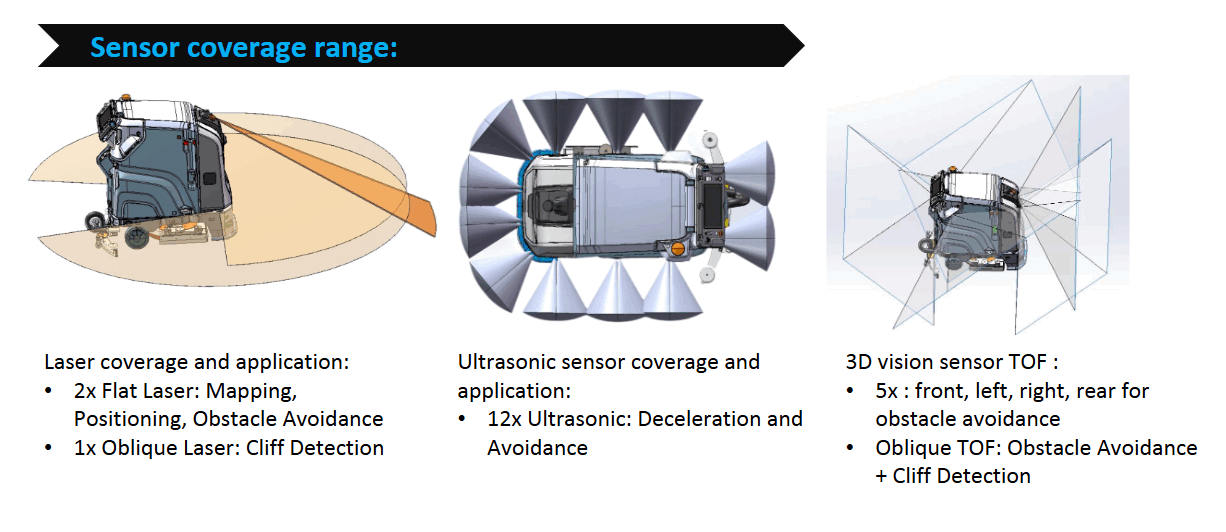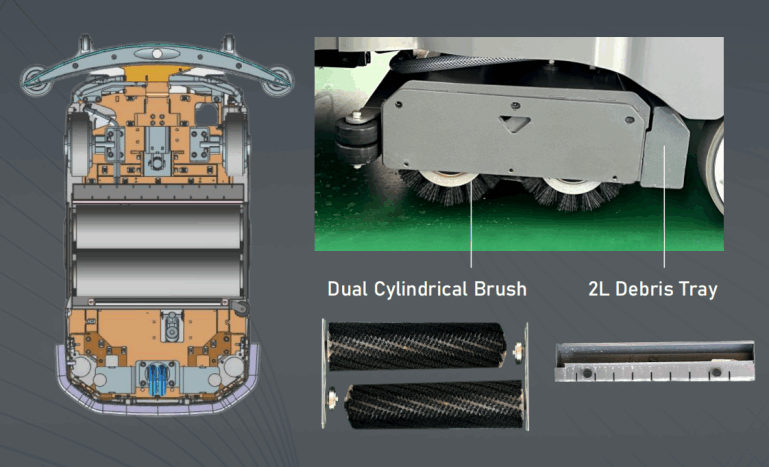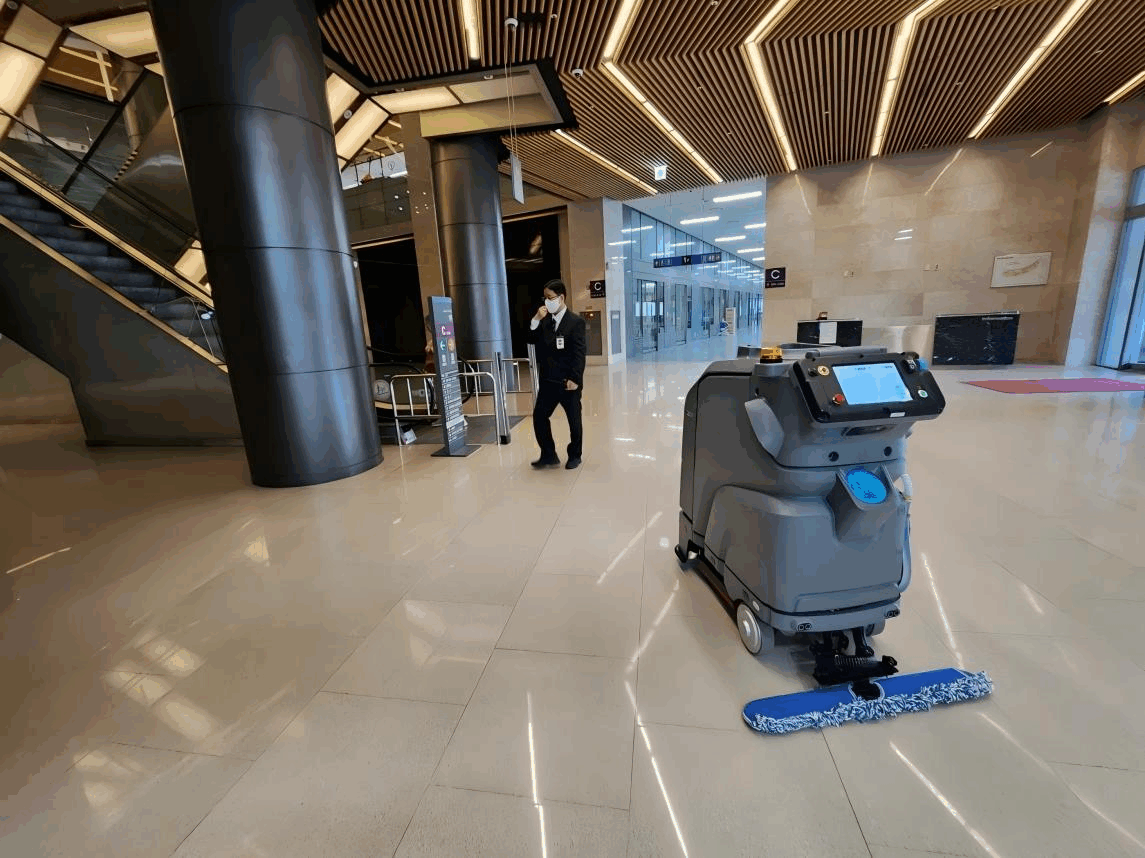What is 360° Sensor Coverage?
Modern dusting robots typically employ advanced navigation systems to minimize blind bumping. They combine laser scans (LiDAR), 3D cameras, and ultrasonic sensors to generate real-time maps of their surroundings. This lets them detect edges, avoid obstacles, and identify accumulated dust in hard-to-reach areas efficiently.
Take the Sparkoz TN70: This powerhouse scans its surroundings 20 times every second using a suite of sensors. All these eyes and ears (40+ sensors) work together, letting it navigate tight aisles and complex spaces with ease, ensuring even hard-to-reach dust gets cleaned up.

TN70 sensor coverage range
Why 360° Sensor Coverage matters?
Compared to simpler cleaning robots or manual methods that follow predetermined paths,dusting robots with 360° sensing can dynamically adjust their cleaning paths in real-time.Encountering sudden obstacles or layout changes,they can immediately re-route to avoid collisions or jams.
The 360° sensing system quickly maps a room and calculates an efficient cleaning path to minimize overlap,saving time and power by selecting the shortest or most logical route.This is particularly beneficial in complex environments like supermarkets and industrial facilities,where repeated cleaning can be avoided.
Enhanced Physical Dusting with Brushes and Cleaning Components
Fully automated cleaning robots integrate traditional cleaning components such as dust mop assemblies,side squeegees,and cleaning brushes (disc and cylindrical) to physically dislodge debris from the floor.These robots are upgraded and retrofitted to maintain a high level of cleaning capacity,beyond just relying on suction alone.
l Deep Clean Roller Brushes: The TN70-Pro cylinderical brush version, published by Sparkoz recently are used for floors with grout or cracks where dirt can easily become trapped. The brushes tun in opposite directions at speeds between 600 and 800 RM to clean deep into these areas and remove dirt where regular brushes might struggle.
The dusting robots sweep and simultaneously-there is no need to sweep before ceaning. Cylindrical brushes are ideal for cleaning grout lines. Higher RPM results in a more effective clean overall.

TN70 roller brush cleaning system
l Adaptive Floor Pressure: Smaller dusting robots from Sparkoz, the TN10, features side brush + roller brush combo and modulates pressure for carpets versus hard floors—preventing fiber entanglement while ensuring thorough cleaning of cracks and grooves.
How Dusting Robots benefits?
Efficient Commercial Maintenance & Lower Operating Costs
High Capacity Dust Mop: A wide 50cm dust mop, guided by smart sensors, lets the TN70 robot cover huge areas – over 2,000 m² per hour. It applies significant downward force (up to 27kg) to remove ground-in dirt more consistently than manual mopping.
l Electrostatic Adsorption: Premium models incorporate electrostatic fibers in the roller brush, which, through friction, generate an electrostatic field to capture PM2.5 particles—perfect for hospitals, labs, and cleaning environments.

TN70 dustmop in the office building
Automated Self-Maintenance & Component Monitoring
Consumable Wear Detection: Onboard cameras monitor brush and scraper wear. When bristle length or component life falls below thresholds, the companion app alerts operators to replace parts—maintaining peak cleaning efficiency.
Real-Time System Status: Sensors report fresh-water and waste-tank levels. Integrated charging stations automate recharge, refilling, and drainage without human intervention, extending uptime for large�area cleaning.
Utilizing advanced technology like 360° vision and intelligent navigation,the robotic cleaners offer autonomous cleaning that ensures no spots are missed.This revolutionary cleaning method not only saves time and energy but also reduces long-term operational costs.As artificial intelligence continues to improve,these robotic cleaners will become increasingly indispensable in maintaining pristine commercial spaces.